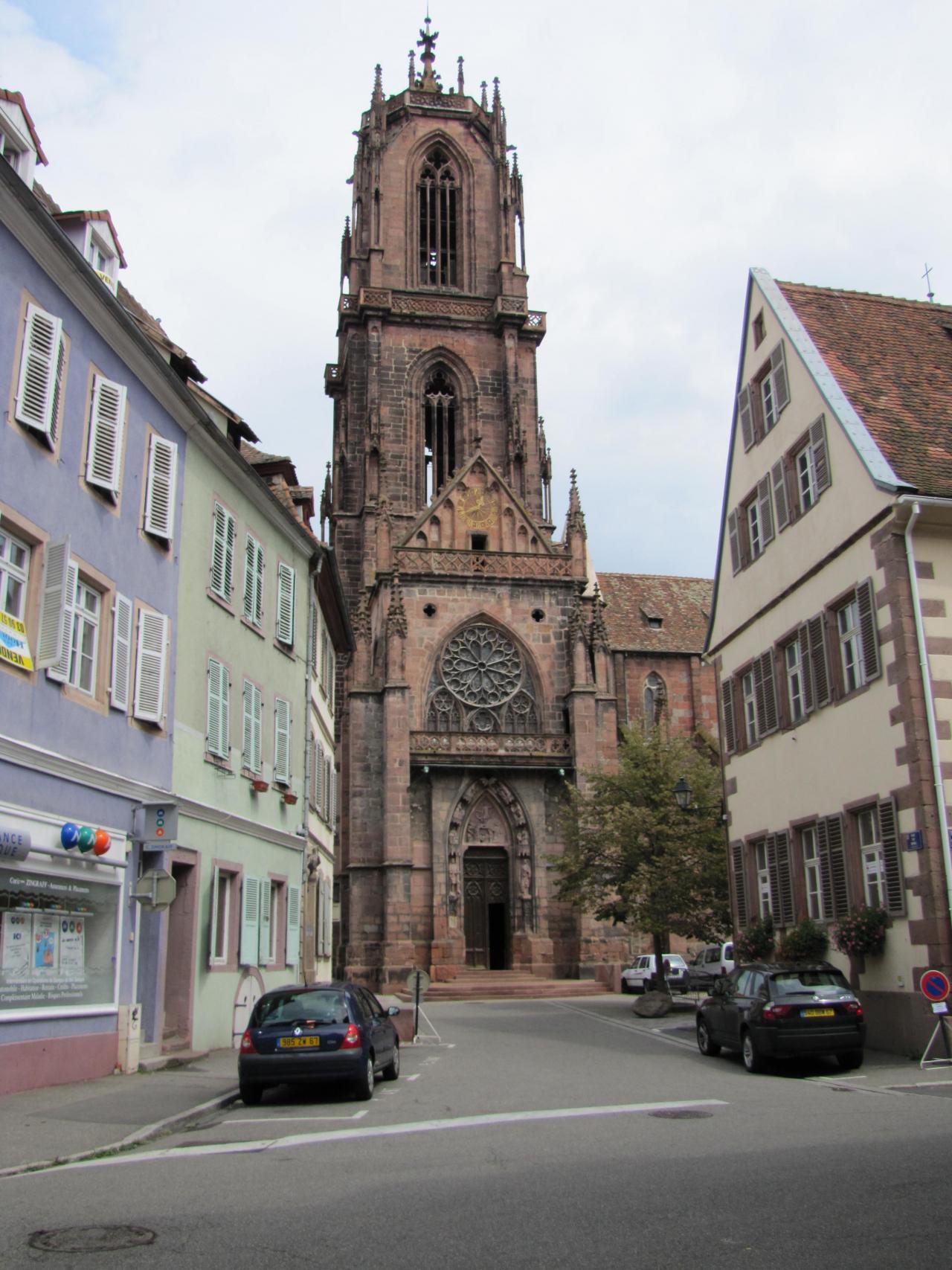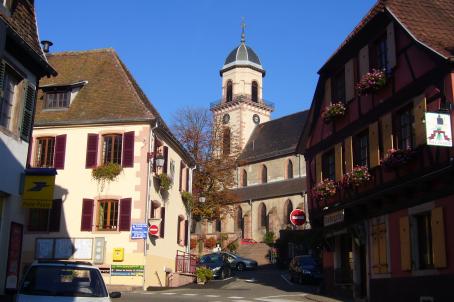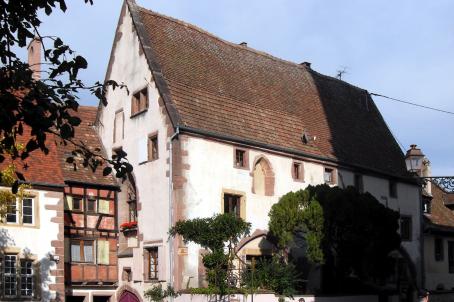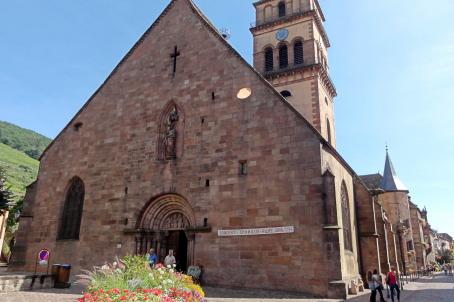Church of Saint George, Selestat

This church is located near the humanist library founded in 1452 by Jean de Westhuss, priest at Saint George's Church. First dedicated to the Virgin Mary, the church is known by the name of Saint George only since 1500. At the site of the church in the 8th century a Carolingian baptismal chapel formed part of an imperial set built by Charlemagne. The latter came to meditate there at Christmas time in the year 775.
About this building
It was built according to a Latin cross plan and has three naves and two opposite transepts. The first choir with two absidioles and the transept were elevated around 1230. The absidioles present in their interior elevations a Champagne party comprising a course above the arches of the first level crossing interior buttresses.





